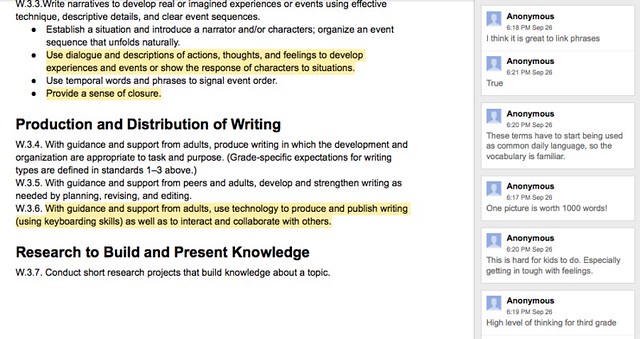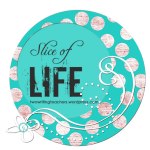
Work and insights being shared each Friday by Chris Lehmann and Kate Roberts around the concept of Close Reading (as they get ready to release a new book on the subject) has me, well, reading their posts closely. They are inviting other bloggers to write about their own views around the concept, and while I have done my own inquiry and even led some professional development work around Close Reading, I am still struggling at times to bring those strategies into my sixth grade classroom.
I appreciated Kate’s post the other day about the “five corners” of close reading, as she critiqued the notion of the Common Core writers about the “four corners” of the text (found in the Common Core companion Publishers Criteria) – meaning that understanding should be cold and not influenced by past experiences. This element of cold reading of text — of reading the text for what it is in relative isolation – has come under a lot of criticism from teachers who regularly use student background knowledge to activate understanding. Kate argues that we all bring our experiences to our reading and we should value that.
Kate writes:
“Flat, ‘four corners’ close reading will not be enough for our students – it will not fuel their engagement to learn and innovate, it will not develop their critical thinking, it will not even at the end of the day help students to achieve higher marks on ever evolving test questions. Only by holding what we are reading in the text against the “fifth corner” of what we know and have experienced can we create truly close, engaged readers.” – from http://kateandmaggie.com/2013/09/05/the-five-corners-of-the-text-close-reading-and-personal-experience/
Chris explored the concept of the term of “close reading” and explored what it is not in his blog post. I appreciated the examples and the references he shared out around the terminology and then found myself shaking my head in agreement with his own ideas.
Chris wrote:
“… we believe that close reading is not simply a way to analyze texts. It is a way to study the things that we love more carefully and appreciate their subtleties more fully. Close reading can be applied to texts, but we also can look to songs, video games, television shows, art and even our daily lives. ” — from http://christopherlehman.wordpress.com/2013/09/02/blog-a-thon-post-1-what-closereading-isnt-or-at-least-shouldnt-be/
Simply put, I like to think of close reading as paying attention to the text. And yes, while I often read for enjoyment and don’t even wonder about the writer’s intent, or use of syntax or style, there are times when I do step back and think: now what the heck is really going on here? Close reading provides the kind of frame to look at writing and other texts in a meaningful, constructive way so that the reader has agency in the compact between writer and reader. It can be critical thinking at its best.
So why do I struggle with it in the classroom?
As I consider this way of thinking, I realize that I do teach my students a lot of these skills, but it feels scattered right now and not at all an organized system of thinking. And, to be frank, teaching explicit close reading skills has the potential to suck all of the fun out of reading a text. That worries me. What I need to do is use more of the shorter texts for close reading so that those skills can be developed for tackling longer texts. I am working towards that right now, and learning more about close reading from others has been helpful.
I am appreciating the sharing of other bloggers, too. For example, Collete Bennett does a great job of examining Hemingway’s famous Six Word Story through the lens of the Five Corners. Kim Corbridge notes that using picture books is a great way to foster close reading skills, and that is certainly true for any grade level. And Mindi Rench’s points about “textbook questions” now being re-labeled as close reading activities hit home with me as I see everything from publishing companies being printed with the “Common Core aligned” sticker.
We need to resist that move by publishers — that close reading is a strategy for standardized testing — and keep our eye on the real rationale — that close reading provides a scaffold of critical thinking for young readers. The terminology might be new, but I suspect many of us have been doing this kind of reading analysis for years. We just didn’t call it close reading.
Peace (in the read),
Kevin




